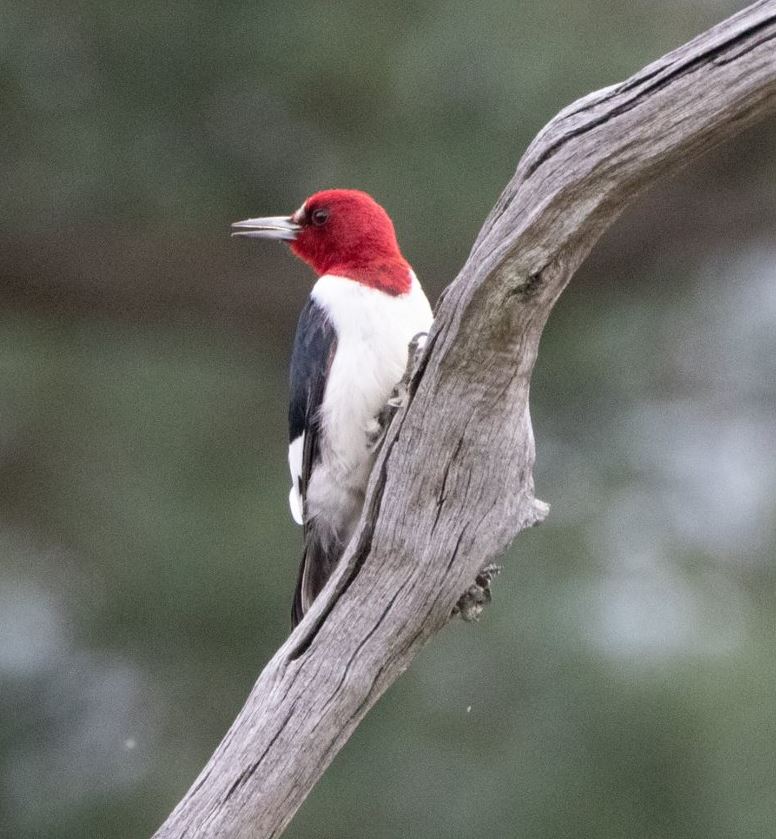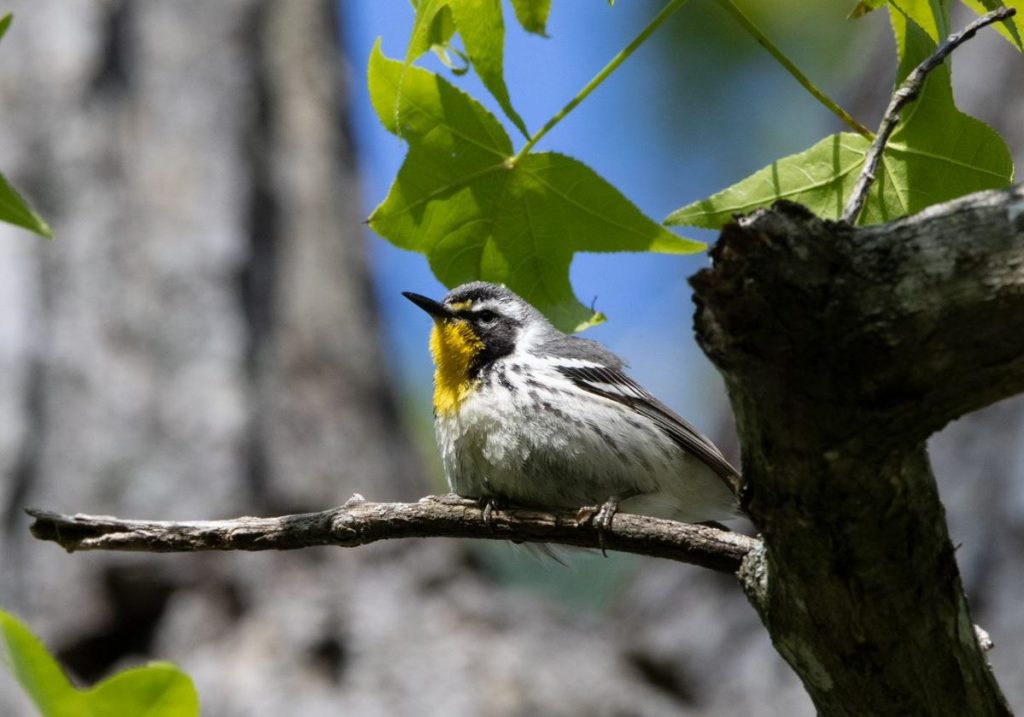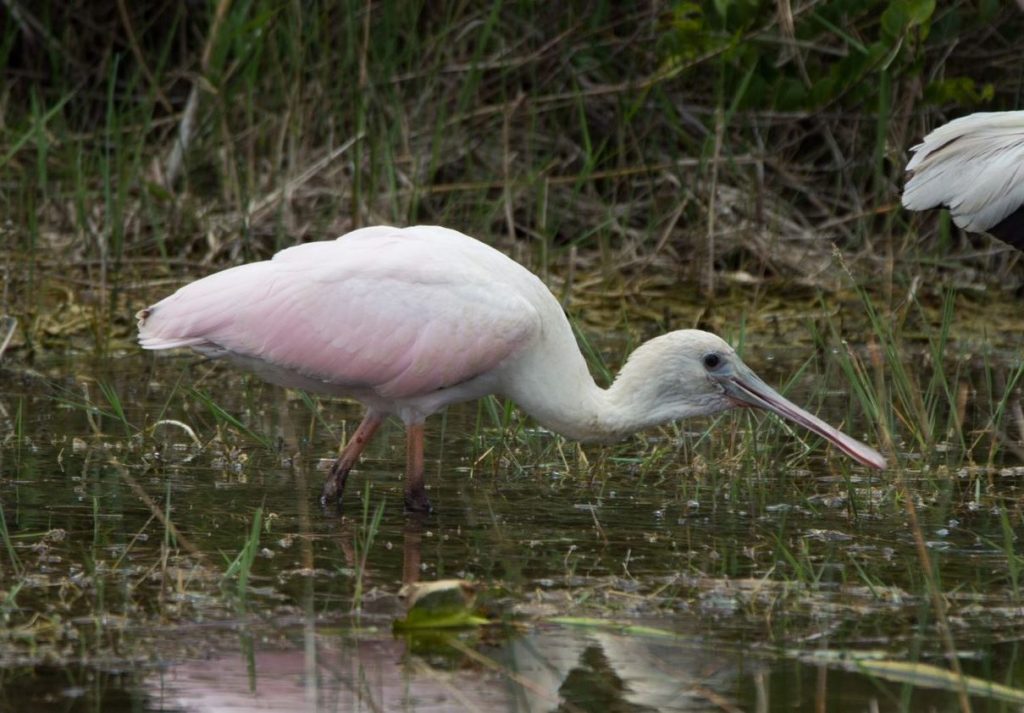By David Fees, Anthony Gonzon, Christina Whiteman and Chris Bennett
 Now that spring is here, it’s a great time to grab your binoculars to witness the spectacle of the return of our migrant bird species throughout the state.
Now that spring is here, it’s a great time to grab your binoculars to witness the spectacle of the return of our migrant bird species throughout the state.
Outdoor Delaware (OD) sat down with our staff birders and bird watchers from the Delaware Department of Natural Resources and Environmental Control to talk about spring birding and what makes it so special.
David: It’s a way to connect with nature. Not only are birds in the springtime remarkably colorful and beautiful, they also have wonderful musical songs. While I have birded for nearly 30 years, the number of species I’ve seen and heard has been truly amazing. Each visit has brought new species as the migration proceeded – flycatchers, orioles, thrushes, 28 species of warblers to name just a few – all this before starting the workday at 8 a.m.
Christina: As a casual birder, I like to visit the two reserves of the Delaware National Estuarine Research Reserve, where I work, but I also feel excited and am in awe of the birds. I enjoy observing what they are doing in their habitat. You can learn a lot from taking the time to stop and watch bird behavior in their habitat but it also takes patience.

Anthony: Birding in the spring is refreshing and renewing. No matter how bad or difficult winter has been, they still return every year and that gives me hope to know they’ll be back. It recharges my batteries when I make the time to spend in nature searching for them. Spring is when many migratory birds return from the tropics, subtropics and even southern South America, adding tremendous diversity to what a birder may see on any given day in the right habitats. Seeing over 100 species of birds in a day is not difficult.
Chris: Seeing any kind of bird just makes me happy, My favorite doubly so. I think seeing birds and getting a glimpse of their daily lives is a privilege. And you don’t need to be a professional birder – you can watch them in your backyard. Dozens of birds nest and forage there. Installing nest boxes, bird feeders or water features is an easy way to get birds to come to us. Watching the birds in your yard or neighborhood, paying close attention to how they move and the sounds they make will help you to find them when you go searching for birds in Delaware’s wonderful natural areas.

Christina: I love seaside sparrows and clapper rails. They live in such a unique marsh habitat and they were some of the first birds I became closely familiar with at the beginning of my professional career.
Chris: Honestly, I like all birds. Songbirds and shorebirds are probably my favorites to look for in spring.
David: Warblers and other neotropical migrants. The warblers that breed in Delaware are seen more often, including yellow-throated, Kentucky and prothonotary. Their beauty and lovely songs are a way to connect with nature.
Anthony: Like David, I’m particularly fond of the warblers, They represent such diversity in only a single group of species. Many are brightly patterned and all have unique songs that I need to relearn every spring.
Anthony: Just get out and do it! You can’t see birds from your couch or from behind a computer screen. Join a local bird club or become a member of an active social media club. Take field trips with bird groups – many are free and open to the public without a membership. Ask questions – most birders will help you find birds and offer advice. Beginners can also download great apps for smart devices like the MERLIN Bird ID app eBird, both free apps developed by the Cornell Lab of Ornithology.

David: Visit a natural area, whether that’s a forest, swamp, field, lake or beach and walk slowly and quietly. When you hear birds singing and calling, stop and let the birds move past you. If you are quiet they often will come closer to you than if you chase after them.
Chris: To really get started in birding or birdwatching get a pair of binoculars. They make it possible to not only bring distant birds closer, but also to watch them from a distance. That allows them to feel unthreatened so you can observe them going about their daily lives.
Christina: Outside of work life monitoring birds, I watch the birds in my backyard or bring my binoculars with me when I walk. I know they are there – I hear them, I look for them. I enjoy birds wherever I am at the moment. Even when I go on vacation, I enjoy taking my time casually looking at the birds.
David: Near my home is the Chapel Branch Nature Area, which is a mature, lovely oak and pine forest along Chapel Branch, a small tributary of the Nanticoke River. I also regularly visit the Delaware Bayshore.
Anthony: I go all over Delaware in search of birds and favor DNREC properties. But I also spend a lot of time at Bombay Hook and Prime Hook National Wildlife Refuges, Ashland Nature Center, Redden State Forest and even small municipal parks like Silver Lake Park in Dover.

Within DNREC’s properties, I am partial to a couple. At the Little Creek Wildlife Area, you can’t beat the view from nearly 30 feet above the marsh at the David S. Small Wildlife Viewing Boardwalk and Tower. I’ve spent hours just enjoying the view. Brackish impoundments and forested wetlands make Little Creek a favorite spot for both migrating songbirds and tidal marsh birds,
There is also a great viewing deck at Augustine Wildlife Area that looks out over the Thousand Acre Marsh and offers the only view not located on a busy road. Augustine is packed full of freshwater tidal and non-tidal wetlands. That makes it a great place to find late migrating and nesting waterfowl like blue-winged teal and wood ducks. Nearby, herons and egrets from Pea Patch Island can easily be seen throughout the day. Patches of woods separated by meadows offer even more species.
Christina: The DuPont Nature Center during shorebird season and Blackbird Creek State Forest trails are two locations for me.
That’s one thing I enjoy about the two components we have at DNERR’s Blackbird and St. Jones Reserves. Not many people know or think of DNERR as a spot for birding. We are often confused as a park or missed completely. When you are at Blackbird Creek Reserve you see birds from chickadees to meadowlarks to bald eagles and kestrels because of the variety of habitats At the St. Jones Reserve, you’ll see some of them, but when you walk on the boardwalk, you might see and hear marsh birds like the clapper rail, marsh wren or seaside sparrow.
Chris: I bird almost all the time, primarily in the area between Prime Hook and Bombay Hook National Wildlife refuges, I also enjoy birding at Milford Neck, Little Creek, Ted Harvey and the Norman G. Wilder Wildlife Areas in Kent County. Redden State Forest in Sussex County is also a great place to bird. I also like the Nature Conservancy’s McCabe Preserve and Ponders Tract near Milton.
David Fees is director of the DNREC Division of Air Quality.
Christina Whiteman an environmental scientist for the DNREC’s Delaware Coastal Programs, and Stewardship Coordinator at the Delaware National Estuarine Research Reserve.
Chris Bennet is environmental stewardship program manager with the DNREC Division of Parks and Recreation.
Anthony Gonzon is Delaware bayshore initiative coordinator for the DNREC Division of Fish and Wildlife.